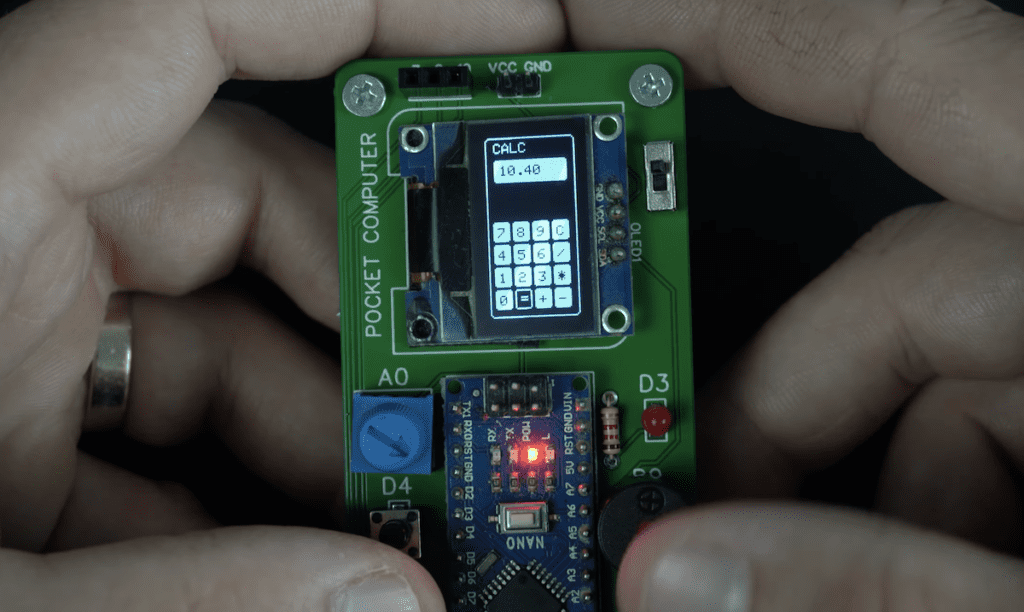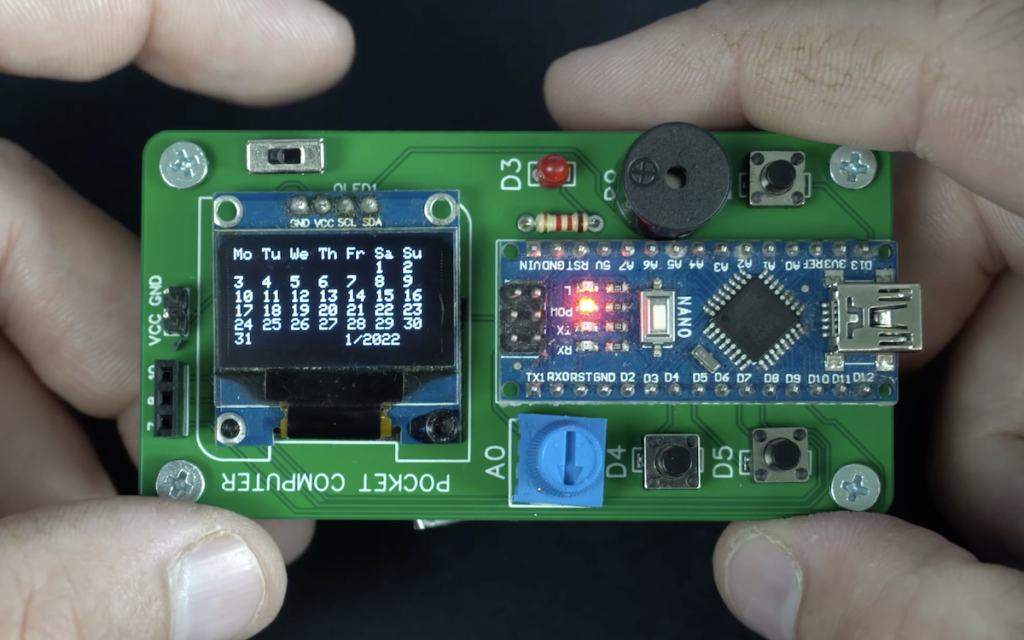— July 13th, 2022

For a time in the late 1990s and early 2000s, PDAs (personal digital assistants) were quite popular. But smartphones made PDAs obsolete, as even early models had far more functionality. Many of today’s microcontrollers have performance similar to early PDAs and Volos took advantage of that to build an Arduino Nano-based mini pocket computer reminiscent of a classic PDA.
PDAs — especially early models — were much more limited than smartphones. Their features were more akin to what we call “dumbphones” today, except without any kind of WiFi or cellular connectivity. They usually only had a handful of “apps,” such as a calendar, watch/timer, calculator, and notes. Later PDAs would include some connectivity options and the ability to send emails, but this mini PC is more like the first generation of PDAs like the Psion Organizer from the ’80s.

An Arduino Nano board controls all of this device’s functions. It attaches to a custom PCB that doubles as the body of the device. The PCB also contains a small OLED screen in portrait orientation, three buttons, a potentiometer, an LED, and piezo buzzer. Volos designed the PCB so that two boards can stack, separated by stand-offs, with the LiPo battery sandwiched in between. Volos programmed some basic PDA apps that utilize custom libraries which keep memory usage down.
If you’re interested in building your own Arduino Nano mini PC, Volos published all of the files you need on his GitHub page.
Website: LINK


